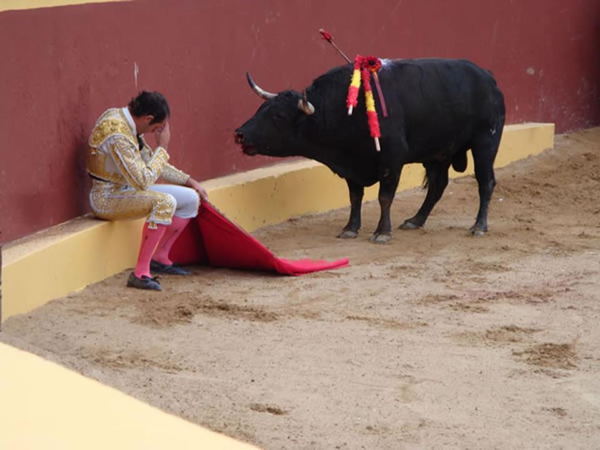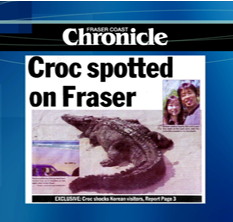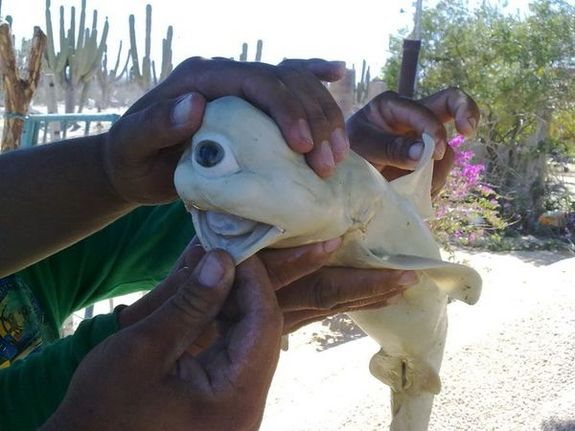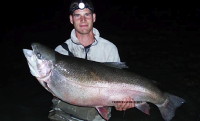The Egg-Laying Dog of Vienna —
Recently I read Jan Bondeson's new book,
Amazing Dogs: A Cabinet of Canine Curiosities. Bondeson is one of my favorite writers because he's a master at finding incredibly obscure but truly bizarre oddities from history, and he doesn't disappoint in this book. I plan to discuss the book more in a future post, because he's collected a lot of urban legends and hoaxes concerning dogs. For instance, he reveals the story of Greyfriar's Bobby to be a hoax (LaMa has
posted about this in the forum). But for now what I want to share is a story he mentions in his first chapter (page 11) about a dog that could supposedly lay eggs. He writes:
Another quaint old dog book is Christian Franz Paullini's Cynographia Curiosa from 1685, a compilation of curious dog lore from innumerable ancient and contemporary sources. Standing out even among Paullini's manifold canine curiosities is the Egg-laying Dog of Vienna. A large mongrel cur, it laid many large eggs via the anus. After each of these strange births, it seemed weak and exhausted, but it soon recovered from its recent confinement and jumped around its master, who showed it as a curiosity. To impress the spectators, and to demonstrate that the eggs were genuine, the enterprising Austrian broke one of the dog's eggs, fried it in a pan, and ate it.
Most normal people would probably think that was an awful story and move on, but I was quite intrigued by it. It reminded me of the story of
Mary Toft and the Rabbit Babies, but instead of a woman stuffing herself with dead rabbits, you had a guy stuffing eggs into his dog. Plus, it offered a curious variation on the ancient tradition of "bosom serpent" legends, which feature various animals crawling inside women, growing to full size, and then emerging in unsettling ways. The most famous modern version of these legends is the tale of the girl who gets impregnated by frog (or octopus) eggs while swimming in a pool. In the case of the egg-laying dog, we're dealing with a different species, but the theme of unnatural births is similar.
Unfortunately Bondeson didn't offer any more details about the case of the egg-laying dog, so I embarked on a fact-finding mission of my own to learn more.
First, I was able to find the book he mentioned,
Cynographia Curiosa, on Google books. (I love Google Books -- a few years ago it would have been close to impossible to track down such an obscure book, but I found it after less than a minute of searching.) The book is in latin, and doesn't seem to have ever been translated, but dusting off my high-school latin, I found the story of the egg-laying dog in it. I've reproduced the latin text below, and then I've attempted a very rough translation. Actually, I've probably mistranslated parts of it, but it's close enough to tell that Paullini's text offers a few more details than what Bondeson provided, but it omits the detail about the owner of the dog eating one of the eggs:

This is indeed a marvel, which Jungius, of the Academy of the Curious, has told (in Ephemeriden, Vol 1:2) of the egg-laying dog -- a dog which had devoured some food prepared by a country woman for her hens in order to make them lay larger and more numerous eggs. Following his master on a journey, the dog then was seen by many spectators to lay some eggs, one after another, excreting them through its anus. After which it was greatly tired, but the food having been removed, it was restored to its former vigor. (See Thesaurus Practicus adauct. by Besoldi, p.389). A friend told me a similar story. And we have heard a similar story about a dog in Westphalia that vomited eggs from its mouth. Were these true eggs? Who can believe it!
Paullini, in turn, attributed the story to Jungius. Some more searching revealed that Jungius was the German scholar
Georg (or Joachim) Sebastian Jungius, who was apparently a member of a German scientific society known as the
Academia Naturae Curiosorum (The Academy of the Curious as to Nature), which published the world's very first scientific journal,
Miscellanea curiosa sive ephemeridum medicophysicarum germanicarum Academiae, in which the story of the egg-laying dog appeared (Series 1, Volume 2, page 348). I find it fascinating that early scientists were sitting around seriously considering topics such as egg-laying dogs.
Unfortunately, Google Books doesn't have a copy of the
Miscellanea curiosa (at least, not a copy of the relevant volume), nor does any library in San Diego have it, so my investigation ended there.
And at about this stage in my research, I was starting to wonder why I was spending so much time investigating a seventeenth century egg-laying dog. But for what it's worth, I did find out that Bondeson also mentioned the story in an earlier book,
The Two-Headed Boy and Other Medical Marvels. But he gave essentially the same details.
Plus, I found online the second reference given by Paullini -- Besold's
Thesaurus Practicus.
On page 389 it has some kind of reference (again in Latin) to a dog laying eggs, but I can't figure out what it's saying.











 The Telegraph recently listed the beach on Queensland's Fraser Island as among the most dangerous in the world. The reasons: sharks, jellyfish, strong rip currents, deadly spiders, the odd saltwater crocodile, and dingoes. But people around Fraser Island disagree. They don't dispute the presence of the sharks, jellyfish, rip currents, spiders, and dingoes. (Though they don't think dingoes are dangerous). But they do insist there are no crocodiles there, except for one — which is fake.
The Telegraph recently listed the beach on Queensland's Fraser Island as among the most dangerous in the world. The reasons: sharks, jellyfish, strong rip currents, deadly spiders, the odd saltwater crocodile, and dingoes. But people around Fraser Island disagree. They don't dispute the presence of the sharks, jellyfish, rip currents, spiders, and dingoes. (Though they don't think dingoes are dangerous). But they do insist there are no crocodiles there, except for one — which is fake. 


 Unidentified pranksters broke into the Sussex Horse Rescue Trust in Uckfield, East Sussex and transformed "Ant" the donkey into a zebra by spray-painting stripes on him (express.co.uk). Ant wasn't hurt in any way, though the spray paint reportedly had a strong, unpleasant smell. The RSPCA condemned the prank: "It's shocking people would think it was funny to spray-paint a donkey in this way. We take reports of animals being painted very seriously." This prank immediately reminded me of the tradition of Tijuana Zebras, which I last posted about back in 2006. I noted then that the Tijuana tradition of painting donkeys to look like zebras was dying out, but perhaps it's reemerging in Sussex.
Unidentified pranksters broke into the Sussex Horse Rescue Trust in Uckfield, East Sussex and transformed "Ant" the donkey into a zebra by spray-painting stripes on him (express.co.uk). Ant wasn't hurt in any way, though the spray paint reportedly had a strong, unpleasant smell. The RSPCA condemned the prank: "It's shocking people would think it was funny to spray-paint a donkey in this way. We take reports of animals being painted very seriously." This prank immediately reminded me of the tradition of Tijuana Zebras, which I last posted about back in 2006. I noted then that the Tijuana tradition of painting donkeys to look like zebras was dying out, but perhaps it's reemerging in Sussex.
 The St. Louis Zoo hasn't had much luck keeping its polar bears alive. From riverfronttimes.com:
The St. Louis Zoo hasn't had much luck keeping its polar bears alive. From riverfronttimes.com: From Wired.com:
From Wired.com: